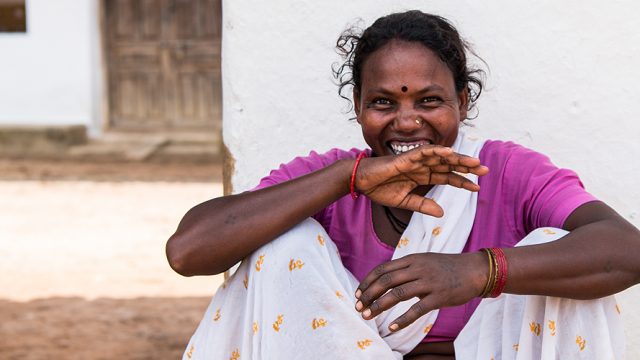For centuries, the lives of Central India’s forest-dwelling Gond tribe have been intertwined with the wild. This innate familiarity with flora and animal behaviour translates into their art. Gond art has been around for centuries, traditionally adorning the walls of their homes in the village. Today, the works of Gond artists like Durga Bai and the late Jangarh Singh Shyam are recognized around the world.

On a circuit of eastern Madhya Pradesh’s national parks, I encounter this unique art form in several places. At Kipling Camp in Kanha National Park, I meet with Ram Kumar Shyam, an artist from Patangarh village. As I admire his stunning paintings, he tells me how, traditionally, Gond artists used natural colours made from flowers and leaves. From the walls of homes, Gond art has now shifted to paper and canvas, and acrylic and watercolours are the medium of choice. The process is painstaking. A small painting takes him a whole day to create, while more elaborate works might take up to three days. Each piece is unique. Mahua trees, the tiger, the barasingha, chital, and different birds form the subjects of the paintings. The landscape of Madhya Pradesh and the community’s interaction with the jungle’s inhabitants is the consistent theme.


Ram Kumar, also known as Jhabbu Shyam, tells me about his process. “I first use a black pen to outline the subjects. Then I choose a pattern to fill it in, and finally, I add colour,” he says.
To me, the most striking feature of his art is the intricate, painstakingly drawn patterns that detail each life form on the canvas. Dots, dashes, and curved lines are common designs.


Elements of nature detailed with repeating patterns are the most recognizable feature of Gond art. At the Kanha Museum of Life and Art at Singinawa Jungle Lodge, I come across several stunning pieces in vivid shades of red, blue, and green. I study the decorative patterns that fill the images of animals, birds, and trees. To me, the designs resemble peacock feathers and drops of rain.

Keen to know more about what these patterns signify, I pick up a book called Signature: Patterns in Gond Art. I’m fascinated to learn that many Gond artists have a signature design they use to add detail to their images. To develop this signature pattern, artists draw inspiration from their surroundings, farms and forests playing the muse. Artist Mohan Shyam fills his images with rows of ears of corn. Suresh Kumar prefers the motif of fish scales and water droplets. Flipping through the book, I learn about different artists’ trademark patterns: young paddy shoots, a creeping line of spiders, marks on the earth from a ploughed field, ants swarming a sliced potato. For the Gond community, art is everywhere in nature, and nature is in their art.

THE INFORMATION
VISIT
Kanha Museum of Life and Art
Hours: 7 a.m – 5 p.m
Entry Fee: ₹500 per person; free for guests of Singinawa Jungle Lodge.
Address: Village Kohka, Tehsil Baihar, near Mukki Gate, Kanha National Park
Website: www.singinawajunglelodge.com
Tel: 0124-4908610
RECOMMENDED READING
- Signature: Patterns in Gond Art by Bhajju Shyam, Gita Wolf, Jonathan Yamakami (Tara Books, 2010)
- The London Jungle Book by Bhajju Shyam (Tara Books, 2004)
Visit MP Tourism
Madhya Pradesh
Gond art
Kanha Museum of Life and Art

